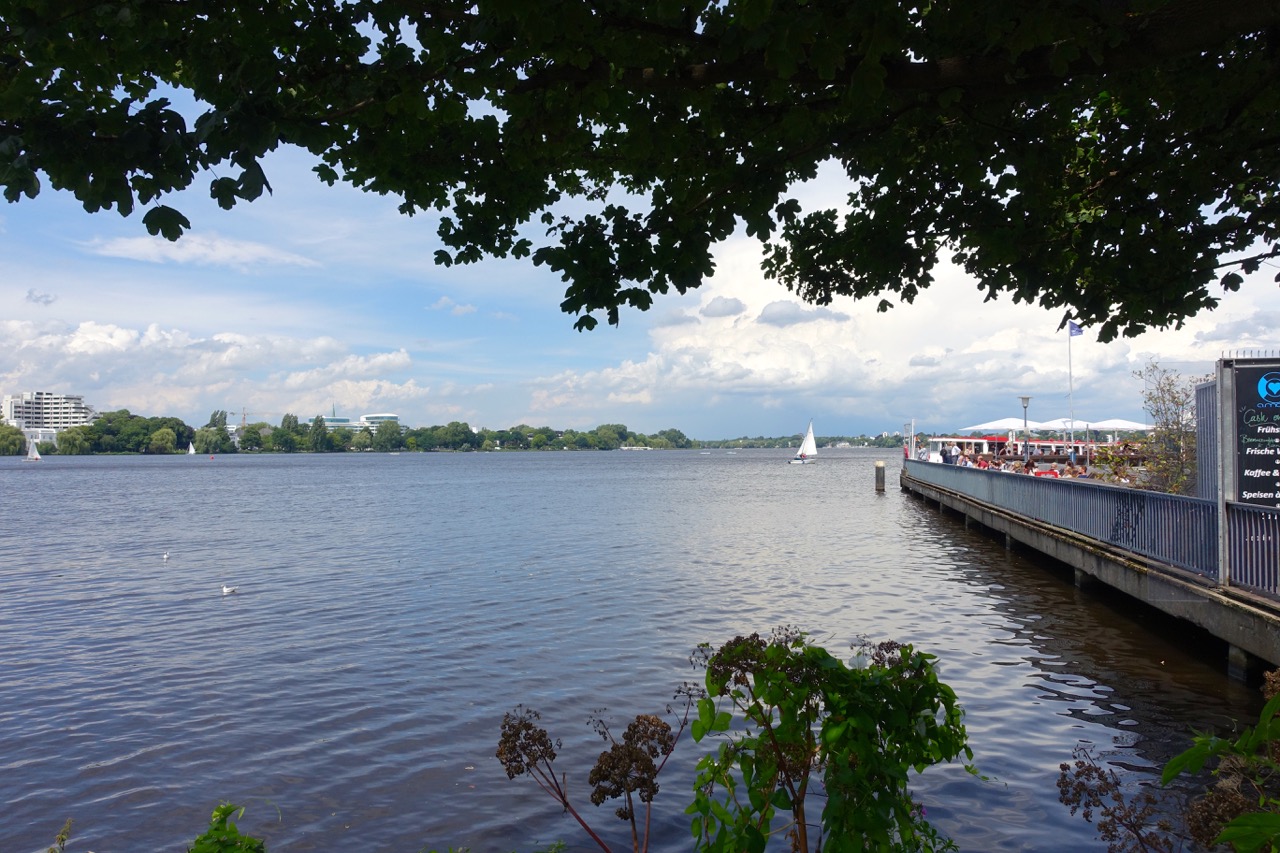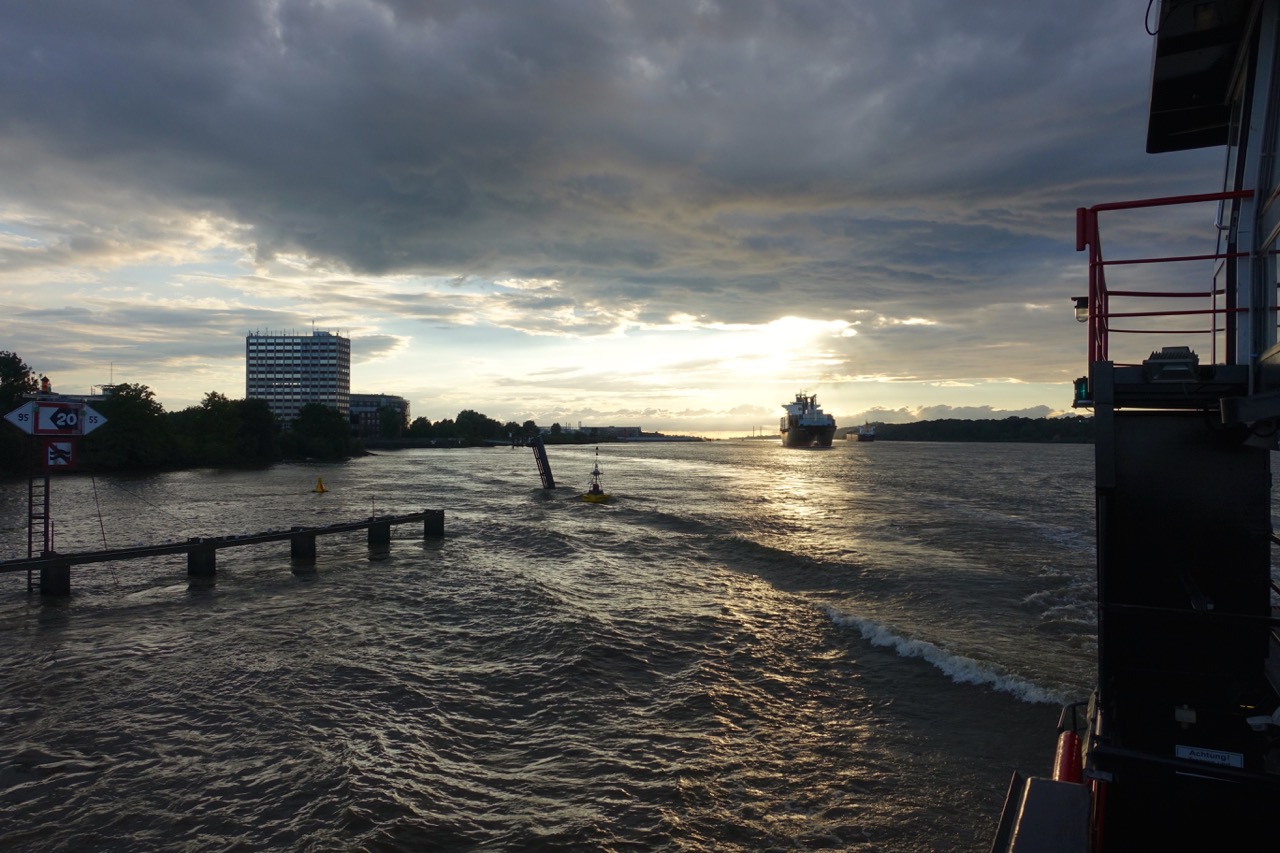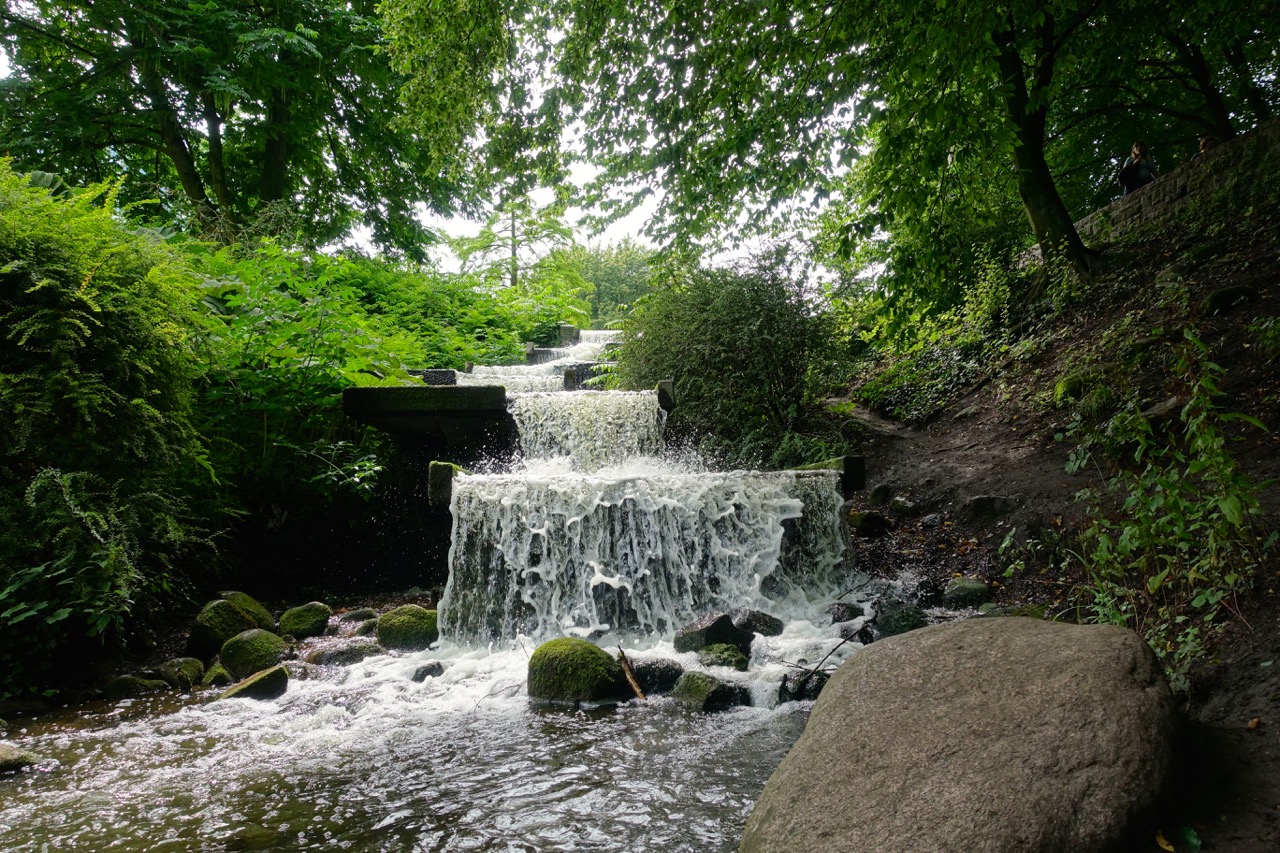
Taking a delightful walk along the E1 through Hamburg
– Did you know? Three stages of the E1 European Long-Distance Hiking Trail are within the city of Hamburg – and in fact, pass right through the city centre. Health and fitness blogger, Tanja Klindworth, has explored this part of the E1 trail:
When you look more closely on the map at the route followed by the E1, you’ll find three recommended stages in the Hamburg area:
2.1 Witzhave-Billstedt – approx. 28 km
2.2 Billstedt-Blankenese – approx. 24 km
2.3 Blankenese-Buchholz in der Nordheide – 36 km
I would personally break up the stretch around Hamburg a little differently to be able to enjoy this wonderful harbour city properly. After all, the route through Hamburg is so interesting, and there’s so much to see and be impressed by that a hiker really should spend a little more time here.
So, come and join me on what I think is the loveliest stage right through the heart of the harbour city of Hamburg – an absolute pleasure of a hiking trail.
Following the E1 through the heart of Hamburg – A route full of pleasures and experiences
Our walk starts at the Aussenalster, Hamburg’s outer artificial lake, which is located just a stone’s throw away from the main railway station, the Hauptbahnhof. It’s a beautiful summer’s day and so we really revel in our stroll along the banks of Hamburg’s city reservoir and marvel at the small sailing boats making their way across the water.
Hamburg’s inner and outer lakes
The Alster lake actually flows alongside the River Elbe. The two Alster lakes, the inner Binnenalster and the outer Aussenalster are located in the heart of the city of Hamburg, having been created as early as 1190 by artificially damming the flow of the river. Today, a visit to the lakes is one of the city’s most popular leisure activities.
From here, the route continues across the Lombard Bridge to the inner lake, with a view over the Alsterfontäne, the water jet that rises from the surface of Binnenalster, as well as the sophisticated “Jungfernstieg” shopping street and the legendary “Vier Jahreszeiten” hotel. We follow the signage for the E1 – a white Cross of St. Andrew – which really stands out in the city, reaching Planten & Blomen Park, treating ourselves to an ice cream at the park entrance due to the hot summer weather.
Planten & Blomen – Hamburg’s answer to Central Park
Planten & Blomen comes from the local Plattdeutsch dialect of High German and means Plants & Flowers. The green heart of the harbour city is located in the downtown area, near the Alster Lakes. The park covers an area of 47 hectares and was established as far back as 1821.
The route leads us a good way through the Botanic Gardens, past the greenhouses, lawns, and ponds. The citizens of Hamburg have made everything in Planten & Blomen so beautiful with a view to creating a true space for relaxation – and relaxation comes naturally here as we really take the time and, above all, enjoy the space for the park to work its magic on us.
The park is spread over several different districts and we barely notice the changes in the outside world before leaving Planten & Blomen in St. Pauli, where we excitedly notice that the Hamburger Dom, the city’s most popular fair, is underway. We therefore spontaneously decide to take a detour, with a view to seeing the distance we’ve already covered “from above.” So, what could be better than taking a trip on the Ferris wheel?
Hamburg St. Pauli district
St. Pauli is well known far beyond Hamburg’s city limits, as it is also home to the legendary Reeperbahn – one of the best-known recreational and red-light districts in the world.
The trail runs parallel to the Reeperbahn, and we climb a small hill, home to the Bismarck Monument, heading for the youth hostel on the Stintfang – probably one of Germany’s most popular hostels. A viewing platform behind the hostel awaits us, offering a stunning panoramic view over a part of the harbour, including the dockside piers and the Hamburg’s newest landmark, the Elbe Philharmonic Concert Hall.
The piers are also the next destination along our pleasure-filled hiking route, where we enjoy a fish sandwich and a shandy (which the locals call an Alsterwasser) as we take in views over the River Elbe. The sun beats down from the sky and the wind gently blows us back onto the trail.
Tip: If you’re feeling hungry you can also take a detour into Hamburg’s Portuguese district, located across from the piers, beneath the youth hostel.
At this point, we should be heading for the Fish Market, but we once again decide to take a tiny detour for yet another new experience. The entrance to the ‘Old Elbe Tunnel’ is located just before the piers and we climb down the steps so that we are located immediately beneath the River Elbe. It’s pleasantly cool down here, while the ‘St. Pauli Elbtunnel’ is a century-old engineering masterpiece which is still in use today, extending over a distance of around 400 metres and ending on the opposite side of the river, where there is a beautiful view over the river bridges.
Once we’ve climbed out of the tunnel again, we follow the banks of the Elbe and the harbour road towards the Fish Market. If you manage to take a walk through the Fish Market before 10 o’clock on a Sunday morning, you’ll be rewarded with a special show, with the legendary Fish Market being held on Sundays from 5 a.m. onwards. However, as we make our way through the market in the early afternoon, it’s rather quiet, and even in the “Strand Pauli” beach bar, there’s not much going on.
Hamburg Altona District
Until 1938, Altona was a town in its own right and, in fact, was even part of Denmark at one point.
From the fish auction hall, you continue along cobbled streets, moving into another district – this time, the suburb of Altona. Just behind the Fish Market, we take yet another break in one of the oldest seamen’s bars in Hamburg, namely the “Schellfischposten” which features in the German late-night talk show, Ina’s Nacht starring Ina Müller. We treat ourselves to another shandy: I don’t know about you, but a shandy always tastes particularly great in fine weather.
The trail then continues through the Altona district, through green spaces, toward the Altona Balcony, which is another beautiful panoramic viewpoint over the River Elbe and the Hamburg Harbour.
Continuing our route above the Elbe, we eventually reach the Övelgönne quayside museum district in the suburb of Othmarschen. A few museums and historic ships are anchored here, and it’s worth allowing some time for a visit.
A little further on from Övelgönne, we reach the Elbe Beach. Before we get the chance to feel the sand between our toes, the trail takes us through the little alleyways and side streets with the quaint fishermen’s cottages and their little front gardens. Then, though, it’s time to take off our hiking boots and enjoy the feeling of the beach and the warm sand on the shores of the Elbe. There are also stunning, shady spots where you can enjoy a short break with panoramic views that provide an ideal opportunity to admire the tramp ships as they pass on the Elbe.
From the Teufelsbrück jetty, we treat ourselves to a cinnamon bun to keep ourselves going before the home straight, with around four kilometres to go until we reach the Blankenese district. As the sun begins to set, we reach the ferry terminal to take us to Cranz, which will mark the start of the next stage.
Tip: Add an overnight stay in the upmarket Blankenese district, where you mustn’t miss out on another detour for an unforgettable experience, namely the chance to explore the Treppenviertel with over 5,000 steps in the hillside.
All pictures in this post ©Tanja Klindworth; spaness.de
Get more from Tanja Klindworth on Spaness – business meets paradise and Wellness-Bummler




